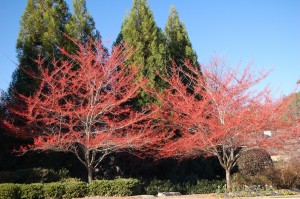 Does your landscape needs some interest this winter? Try incorporating in these two shrubs and an evergreen perennial into your woodland landscape plantings.
Does your landscape needs some interest this winter? Try incorporating in these two shrubs and an evergreen perennial into your woodland landscape plantings.
Daphne odora is a classic southern fragrance.
Every southern landscape needs Daphne odora to welcome in the fragrance of winter. This evergreen flowering shrub creates a unique feature to your winter landscape, flowering from late January to early March, depending on weather conditions. Its fragrance summons the thoughts of what spring will be.
Daphne is a great plant for a woodland or shade garden, growing only 3 to 4 feet tall on maturity. Mixed in with plantings of hostas and other later spring blooming perennials, it creates a great seasonal mix for your pathways and woodland garden.
Need a winter flowering fragrant shrub for your landscape?
Think of planting Edgeworthia (Paper Bush) shrub. Edgeworthia flowers in the winter months and is a great woodland plant for your landscape. Mix them in with evergreen ferns or heuchera to create nice woodland plantings that are seasonally interesting.
Upside down tulip? No, it’s Hellebores.
Sometimes that’s what Hellebores (Japanese lantern) look like when they bloom. This winter blooming perennial is quite interesting for a woodland garden landscape. The blooms with shades of pink to white make up the color array of this hardy evergreen perennial. Incorporating again Hosta, evergreen ferns and Heuchera along with other early spring and summery perennials creates a long-lasting array of seasonal interest in your landscape.









